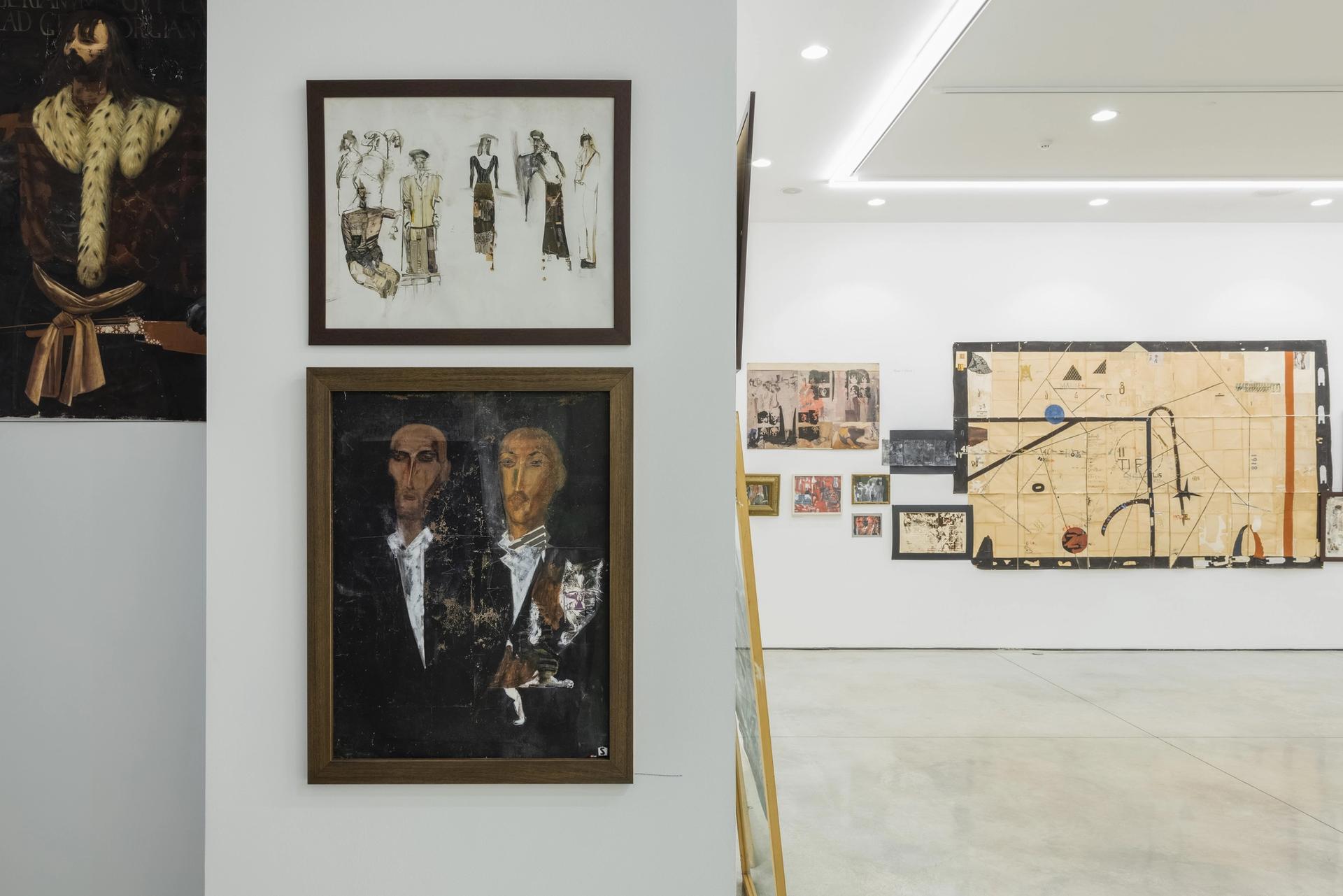Georgian artists aren’t often in the spotlight, but a new exhibition in Tbilisi will now shine a spotlight on a key figure and critic of the former Soviet Union.
Levan Chogoshvili’s first large-scale solo exhibition in Georgia at the Atinati Cultural Center, a non-profit charitable foundation established to promote Georgian art and culture, brings together over 40 works spanning a 50-year period, from oils to his cardboard and paper assemblages accompanied by video pieces. The exhibition (Traceryuntil July 10) includes works from three series: Destroyed Aristocracy (1970-1985); Venus and Mar(k)s (1970-1980); AndThe donkey’s path

Installation plan of Tracery at the Atinati Cultural Center
Courtesy of Atinati Cultural Center
In Aristocracy destroyedChogoshvili turns to Georgian church murals and Persian manuscripts, depicting Georgian nobility, as well as Georgian and foreign intellectuals – Germans, Poles and other nationalities – who settled in Georgia.
In a statement on the Bonhams website, he says: “My series of paintings from photographs Aristocracy destroyed 1970-1986, which was banned during the Soviet era and which I consider to be my main work as an artist, was not born out of a fascination with the tragic events of the early 20th century, but rather from an effort to generate a new art form via an interpretation of these convoluted historical events.
Chogoshvili graduated from the Tbilisi State Academy of Arts in the late 1970s and often performed in underground performances for fear of being censored and prosecuted.
“Before perestroika [reforms introduced by Mikhail Gorbachev, former president of the Soviet Union, in the mid 1980s]Chogoshvili was an ‘unofficial artist’,” says exhibition curator Nino Tchogoshvili, professor of art history at the Tbilisi Academy of Fine Arts.
“During his studies in the 1970s and the first half of the 1980s, [Levan] did not have the opportunity to participate in official exhibitions. His art was against Soviet politics, cultural politics in content, in form conceptually, so his first exhibition had great resonance. Such critical works were impossible in Soviet art, but this exhibition took place in 1985, when censorship was no longer so strong,” says Tchogoshvili.
“After the collapse of the Soviet Union, Chogoshvili went ‘unofficial’ again in the 1990s because he could not cooperate with the government, which led to ten years of terror in the country at a time of wars, hunger and poverty. He created video works and performances critiquing the post-Soviet period [and regime].”
The word “Interling” is a pun tied to projects that weren’t made in the 1990s because of censorship at the time, she says. It also highlights the linguistic aspect in the practice of Chogoshvili. Her father, George Chogoshvili, was a renowned mathematician and worked on a dictionary in six languages while her mother, Msia Andronikashvili, wrote key texts on the relationship between Indo-European and Georgian languages.
In the 1990s, when there was little paper, electricity, heat, or money in Georgia, scientists and artists used whatever they could, like tea bag paper and toilet paper, for their work, adds Tchogoshvili. At that time, Levan Chogoshvili, together with his brother Archil, was engaged in linguistic experiments, which had their roots in the Georgian avant-garde of 1910, reflected in the work Zaum by Ilya Zdanevich and the group of poets Blue Horns.
In the early 2000s, the artist won the Pollock-Krasner Prize. Chogoshvili has participated in exhibitions organized by Daniel Baumann including an exhibition at the Kunsthalle in Zurich in 2018. He is currently working on an exhibition dedicated to the Georgian avant-garde planned for October as part of the Europalia festival in Brussels.
